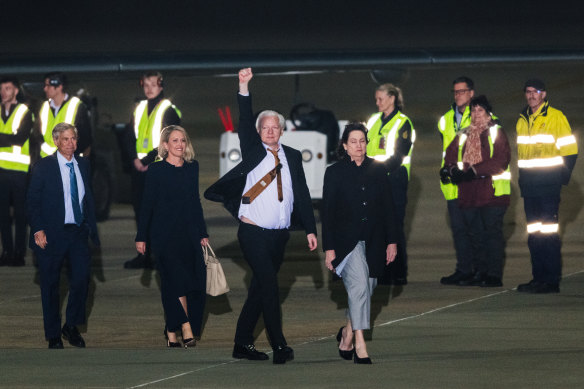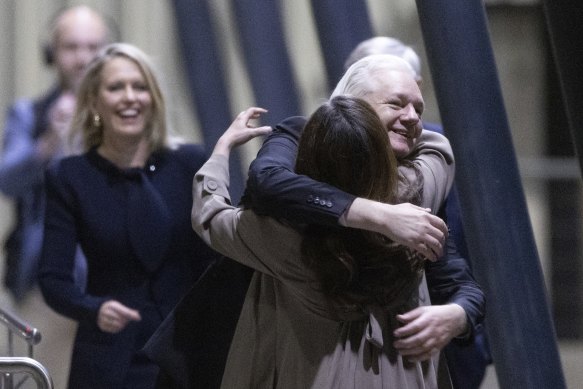

Assange on the tarmac in Canberra.Credit: James Brickwood
US prosecutors accused him of seeking to help hack into classified systems with Chelsea Manning, a former army intelligence analyst. Manning was court-martialled and served seven years of a 35-year sentence for violating the Espionage Act, until Obama commuted her sentence in 2017.
When the video was first published in 2010, the Pentagon had already identified WikiLeaks as a threat to national security in a confidential report, which was also published by the whistleblower website in 2010, leading to further embarrassment.
WikiLeaks’ arrival on the global scene shook up the international community and the journalism world. The New Yorker asked in 2010, “What Does Julian Assange Want?” WikiLeaks received more than US$200,000 in donations after publishing the Baghdad video, reported The New Yorker, and two days later, Assange tweeted: “New funding model for journalism: try doing it for a change.”
Others were critical of Assange. Lisa Lynch, an assistant professor of journalism at Concordia University in Montreal who has written academic papers on WikiLeaks, described the publication’s coverage at the time as “an audacious attempt to assert themselves into the conversation”, The New York Times reported.

Stella Assange greets her husband on his arrival.Credit: Alex Ellinghausen
The US government’s assertion that WikiLeaks was a criminal entity for releasing leaked classified documents raised fears in the media industry about eroding access to government officials.
Reuters had seen the video footage of the Al-Amin attack before WikiLeaks published it, but the news outlet was unable to obtain it through a freedom-of-information request because the Pentagon blocked it.
At the time, WikiLeaks said it had “obtained this video as well as supporting documents from a number of military whistleblowers” and verified its authenticity in conversations with “witnesses and journalists directly involved in the incident.”
WikiLeaks said the specific aim of publishing this video was that “some of the people killed were journalists that were simply doing their jobs: putting their lives at risk in order to report on war,” the Post reported.
Loading
The existence of the video and killing of at least 11 people had already been reported before WikiLeaks, but “Collateral Killing” still garnered international attention partly “because the banter of the soldiers was so far beyond the boundaries of civilian discourse,” according to The New Yorker.
When the lead helicopter opens fire, an airmen shouts: “Hahaha. I hit ’em.” Another responds a little later: “Oh yeah, look at those dead bastards.”
Once the dust settles and the helicopter hovers higher, a survivor, believed to be Reuters driver Saeed Chmagh, 40, can be seen in the footage. He appears wounded and unarmed.
“All you got to do is pick up a weapon,” a crewman can be heard saying, hoping that the man reaches for a gun so there is a viable reason to shoot again.
Loading
The footage then shows a van drawing closer, as two unarmed men step out and start carrying the wounded victim to the vehicle. The helicopter requests permission to engage and, upon receiving it, opens fire again, killing the wounded man and those trying to help him, and injuring two children in the van.
Ten minutes after the second round of shooting began, it is discovered that children have been wounded. The aircrew can be heard blaming the Iraqis, reported the Guardian. “Well it’s their fault for bringing kids into a battle,” says one. “That’s right,” says another.
The Washington Post



























